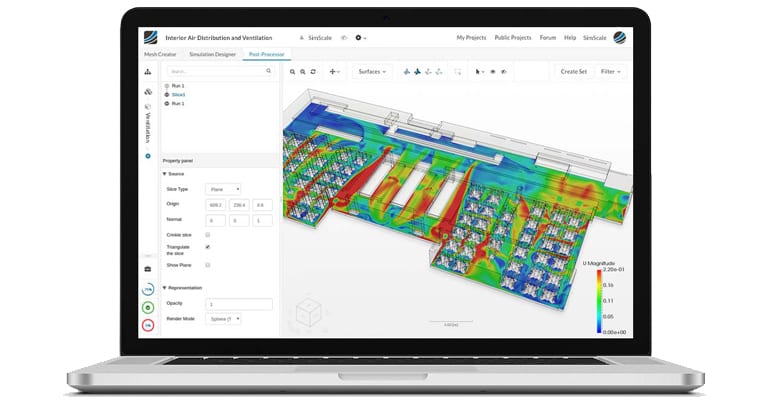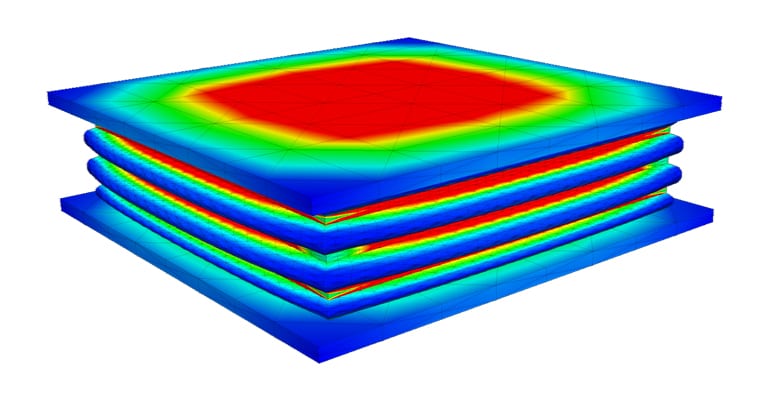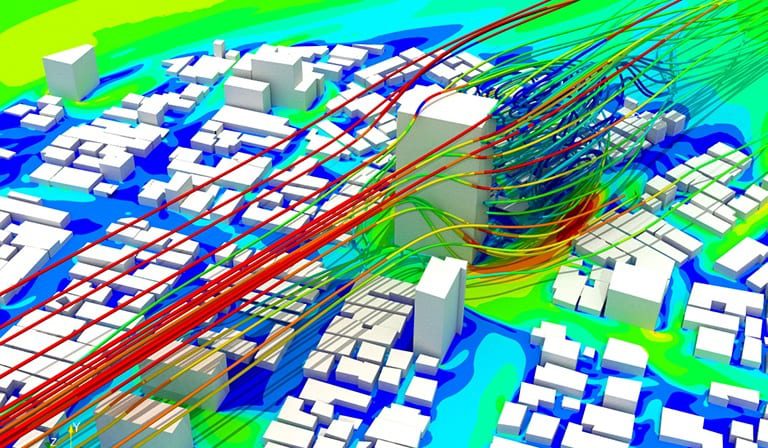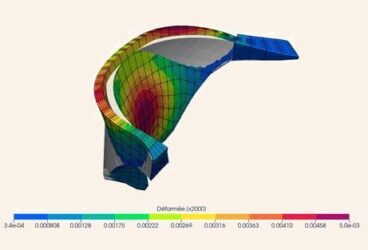If you are a modern architect or civil engineer, chances are that you have heard of numerical simulation: computational fluid dynamics (CFD) or finite element analysis (FEA) are widespread techniques that have revolutionized the way engineering and design are done.
Numerical Simulation? Do I Need It?
If you don’t know what it is, I will put it simply: numerical simulation replaces physical testing with experiments performed on a computer. For example, a wind tunnel test is replaced with a virtual fluid test using CFD. Or a structural load test is replaced with a finite element virtual structure. Then, using advanced physics and number crunching, data is processed and extracted to evaluate the performance of the tested subject in terms of deformations, stresses, fluid velocities, temperatures, and the like.
The main advantages of using simulation over physical testing are agility and cost reduction. Models can be changed and tested without the need to reserve laboratory time and wait for prototype fabrication. And as they are run on computers, you can leverage the infrastructure you already have. For cases which demand higher resources than you might have at hand, I will present you a great solution, so stay tuned!
Problems I Didn’t Know I Had!
Modern construction projects are subject to higher demands than ever before. Aspects such as energy efficiency and sustainability, occupants’ comfort, structural performance against earthquake or tsunami loads, and wind loads on high-rise buildings are conjugated with the ever-present quest for cost reduction.
These requirements put enormous stress on the way building projects are carried out by architects and civil engineers. This is especially true for the design phases, which are critical because the earliest decisions have a higher impact and lower implementation costs. But how can we assess the performance of a building that is still at an early stage, such as the conceptual design one? Virtual testing with numerical simulation, of course!
Can This Help Me Improve the Quality of My Job?
If leveraged correctly, virtual testing can provide great benefits to the quality of a construction project. This is because it helps architects and civil engineers to make informed decisions that are based on reliable data. Also, engineering can be carried out beyond what is contemplated in code requirements and calculation formulas, for areas not covered or for more demanding performance.
Virtual simulation unleashes the engineer’s ability to get deep knowledge of the performance of the building and the impact of design variations. Engineers can test whole models or isolated areas, and measure variables in any geometrical location. And when performance criteria are established, multiple design candidates can be tested for optimization purposes. In the end, designers and management can rest assured that the best possible design has been selected.
Discover the SimScale Platform!

Now that you know all the benefits that simulation and virtual testing can bring to your building project, the next question is: how do I get them? I present to you the SimScale platform: a cloud-based simulation tool that can be accessed from anywhere, at any time, through a web browser, and allows you to tackle simulations of almost any size and complexity.
Its benefits over traditional desktop tools include aspects such as the convenience of not having to install and maintain software and licenses; the possibility of using your current computers, as no particularly powerful machines are needed (all number crunching is carried out on remote cloud computers); the reliability of your data being managed in the cloud, with backups and content delivery networks; easy sharing and collaboration among design teams; fast response support, with optional sharing of project data.
Example Applications for Architects and Civil Engineers
The following are some relevant simulations that have been created on the SimScale platform, which should give you an idea of the capabilities of virtual testing and of this platform for architects and civil engineers:
Airflow Around Singapore
In this project, the wind flow around a real city landscape is tested. You can see the scale of the simulation and the practical application if, for example, you would like to design a new structure in the area and want to investigate the influence of the new building or the expected wind pressure levels.

Static Analysis of an Elastomeric Bearing Pad for Bridges
This project tests composite steel and elastomeric bearing pads, as used in a bridge interface to foundations. Advanced material models allow us to take into account the realistic, non-linear behavior of the elastomer. Elements such as these are used for dynamic load-resisting structures, such as vibrations, earthquakes, or wind, and mainly for their high flexibility and fatigue resistance.

Pedestrian Wind Comfort Simulation in a City with CFD
In this project, a computational fluid dynamics simulation is used to examine the impact that the buildings have on wind flow, such as vortex formation and tunnel acceleration. Flow variables are then evaluated at pedestrian locations to assess if they pose a risk to comfort or even safety.

If you’d like to learn more, here is the recording of a webinar about how to evaluate pedestrian wind comfort with CFD by using a standard web browser:
Thermal Comfort in a Theater Room through Ventilation
In this project, two options for the ventilation of a theater are compared to select the best design based on thermal comfort variables. Using this tool, an informed decision can be made in the design phase to select the optimal ventilation strategy, reduce energy consumption, and ensure that performance criteria are met.

This webinar recording gives more information on how to optimize ventilation systems and HVAC components with fluid flow simulation without leaving the web browser.
Conclusion
Architects and civil engineers now have several reasons to start making use of the power of numerical simulation for virtual testing. The SimScale platform offers a very attractive entry point to start learning and testing, with many public example projects that one can copy and modify, a great online community and support, and the possibility to first try the tool for free. with the Community account. Be ready to take your buildings to the next performance level.
Sign up and check out our SimScale blog for much more!


